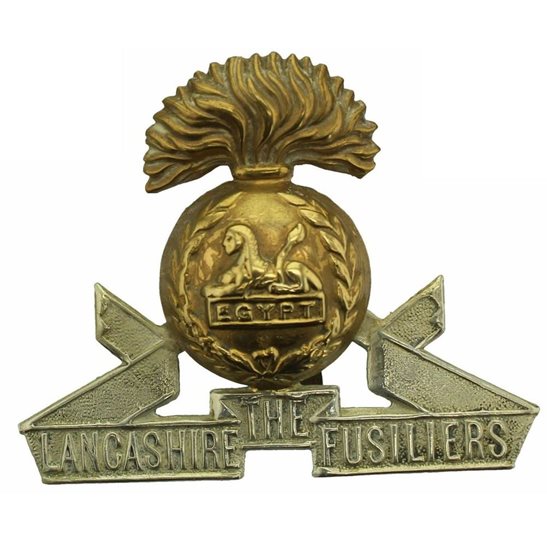Personal Details
Born: 29 September 1899
Family: Second of six surviving children born to George and Fanny Cliff. Towards the end of 1931 Thomas married Elsie Williams in Ellesmere, Shropshire. Together they had one child, born in 1940; Thomas G.
Residence: In 1901 the family were living in Mile Bank, Whitchurch. Ten years later they were residing at 3 Creamery Cottages, Whitchurch and were still there in 1919, although the address was given as number 2 rather than 3. In 1939 Thomas and Elsie were living in Meadow View, Wrexham Road, Whitchurch, Shropshire.
Employment: By 1939 Thomas’s occupation was that of master builder.
Died: In 1975 in North Shropshire, aged 76.
Military Details
Regiment: Lancashire Fusiliers
Rank: Private
Service Number: 53222
Date of Enlistment: Not known
Date of Discharge: After Spring 1919
Reason for Discharge: Not known
Thomas was awarded the Campaign Medals (British War Medal, and Victory Medal).

The British War Medal (also known as 'Squeak') was a silver or bronze medal awarded to officers and men of the British and Imperial Forces who either entered a theatre of war or entered service overseas between 5th August 1914 and 11th November 1918 inclusive. This was later extended to services in Russia, Siberia and some other areas in 1919 and 1920. Approximately 6.5 million British War Medals were issued. Approximately 6.4 million of these were the silver versions of this medal. Around 110,000 of a bronze version were issued mainly to Chinese, Maltese and Indian Labour Corps. The front (obv or obverse) of the medal depicts the head of George V. The recipient's service number, rank, name and unit was impressed on the rim.
The Allied Victory Medal (also known as 'Wilfred') was issued by each of the allies. It was decided that each of the allies should each issue their own bronze victory medal with a similar design, similar equivalent wording and identical ribbon. The British medal was designed by W. McMillan. The front depicts a winged classical figure representing victory. Approximately 5.7 million victory medals were issued. Interestingly, eligibility for this medal was more restrictive and not everyone who received the British War Medal ('Squeak') also received the Victory Medal ('Wilfred'). However, in general, all recipients of 'Wilfred' also received 'Squeak' and all recipients of The 1914 Star or The 1914/1915 Star (also known as 'Pip') also received both 'Squeak' and 'Wilfred'. The recipient's service number, rank, name and unit was impressed on the rim.

